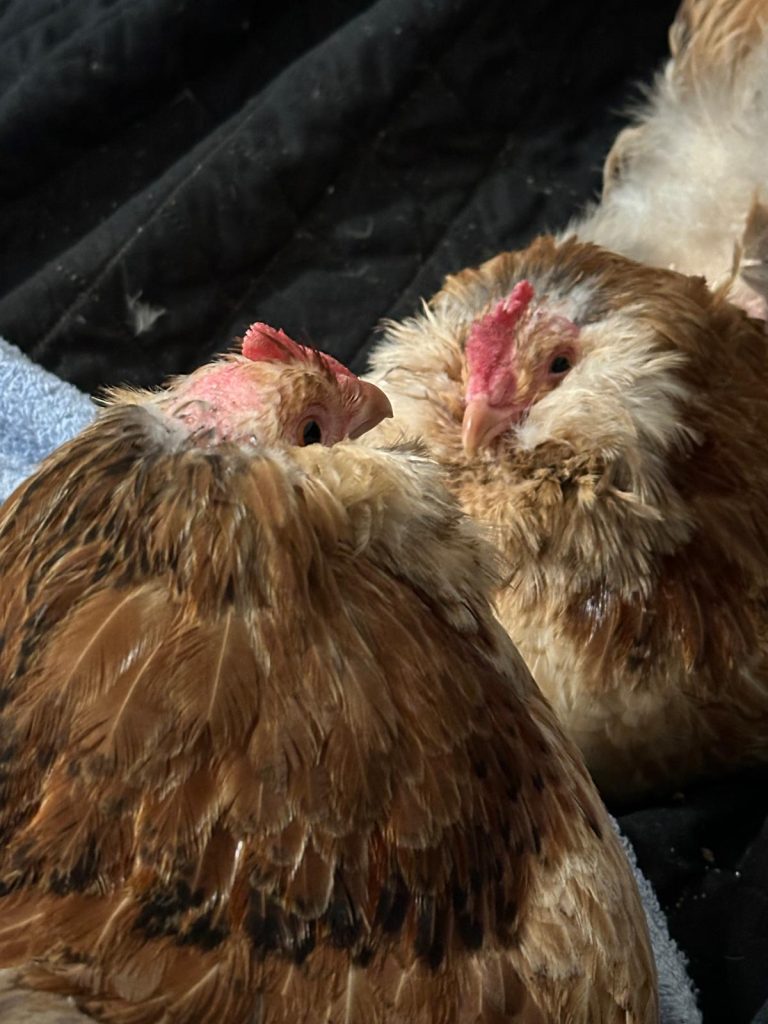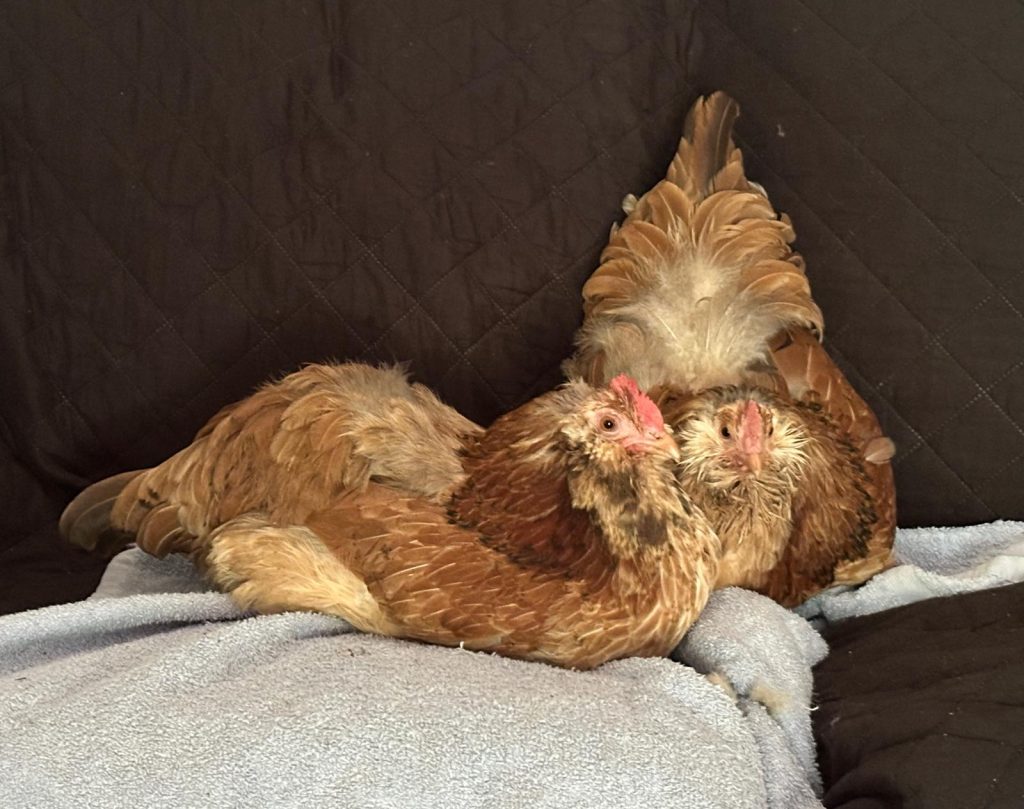In 2024, I hadn’t planned to hatch any chicks of my own. I already had a batch coming from a hatchery in the summer and figured that would be enough for the year…but, as any chicken keeper knows, plans don’t always matter much when hens get broody. A few of mine tried anyway — and one, true to her name, got away with it.
Escapé disappeared for a bit, and when she reemerged, she had several fuzzy little chicks trailing behind her. I was surprised, impressed, and instantly concerned – especially because she wasn’t sleeping in the coop at night.
Over the following days, I noticed fewer and fewer chicks. I feared a predator (likely a snake) was picking them off, which is one of the unfortunate risks of free-ranging. Knowing my hatchery chicks would be arriving soon, I needed a plan to keep them safe. I prepped a brooder inside the house with a heat plate, food, and water, ready to raise them myself.
In the end, I had 17 babies in the house – including one I managed to rescue from Escapé’s group before it met the same fate as the others.
While I’ve raised chicks indoors before, I strongly believe nothing compares to a mama hen. They teach their chicks to forage, recognize danger, and introduce them to the rest of the flock…all the things a heat plate just can’t do. So, I tried to see if Escapé would take to the new chicks. She wouldn’t. She was too wild and didn’t care for being cooped up in the house (literally).
Then, I thought of Sora.
She’d been broody for maybe a week…not long, but she was gentle, used to me, and I trusted her. I brought her inside and introduced her to the chaos of 17 cheeping chicks. She looked at them. She looked at me. She looked like she was reevaluating her life; but then…she made the sound I’d been waiting for: the mama cluck.
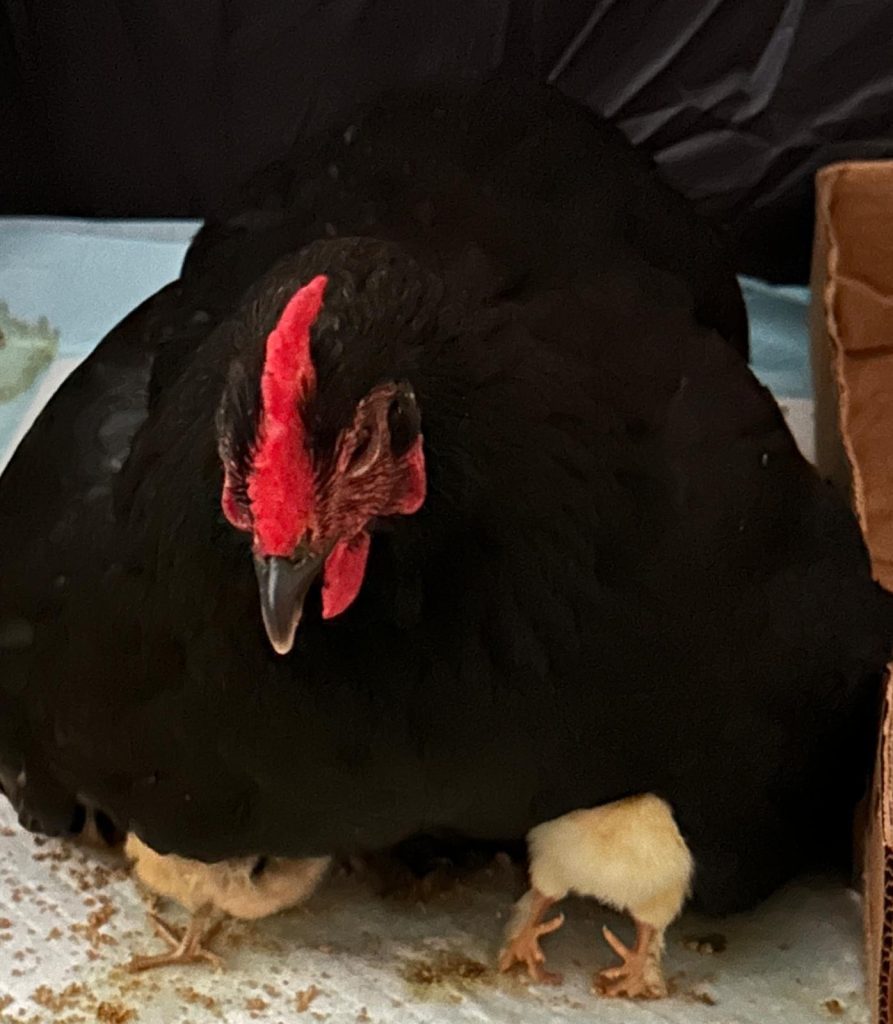
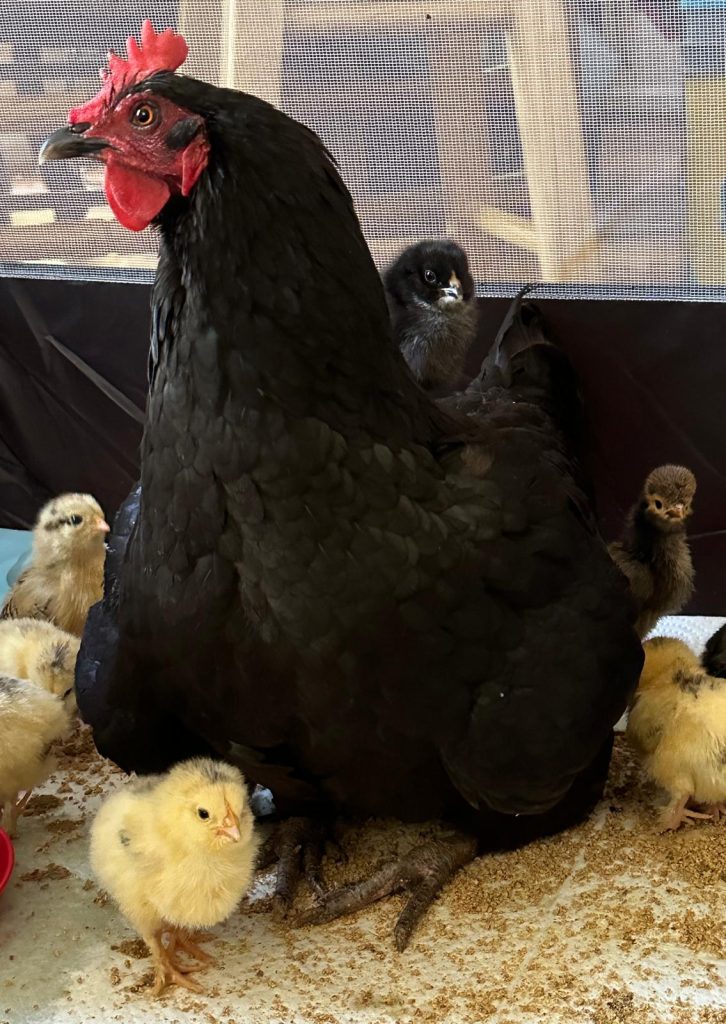
She began calling to the chicks, showing them food and water, welcoming them under her wings. A few scrambled underneath her right away. That warmth, the sound of a mama – it’s something a brooder setup can’t replicate. Because Sora trusted me, the chicks did too. I spent a lot of time with them – hand-feeding, petting, and letting them perch on me.
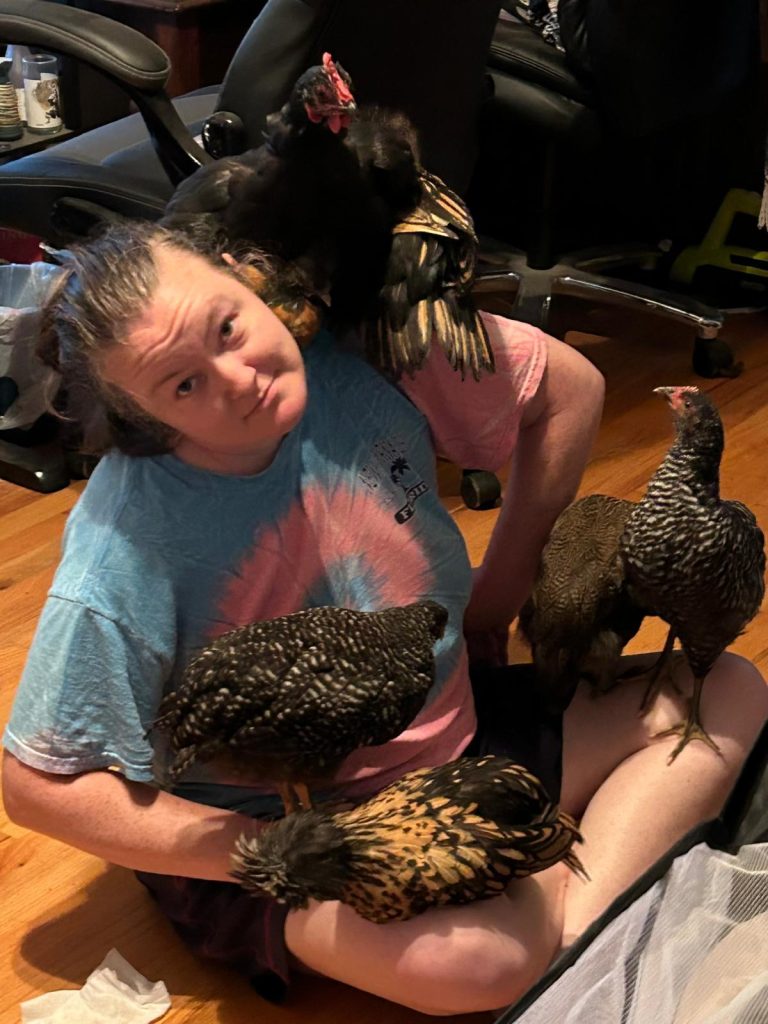
During those first weeks, Sora stayed indoors with them. We developed a routine: I’d carry her outside to do her business (she did her best not to poop inside – thank goodness, because broody poops are their own horror). She’d stretch, dust bathe, get some sun, and hurry back to the chicks calling.
Once the chicks were a few weeks old, I started letting Sora take them out for little outings. They followed her faithfully, responding to her voice. They learned to hide when she gave an alert of potential danger. Sometimes, I could carry her back inside and they’d trail behind her like feathered ducklings on a mission.
Gradually, they started spending more time outdoors. I let them explore near the main coop, where Sora would hop around picking berries for them. She was high enough in the pecking order to keep the flock in check, but with 17 babies to watch, she had her wings full.
Sora seemed more comfortable near the house, and honestly, I think she enjoyed the break – and the air conditioning. Who can blame her?
The chicks grew fast, as they do. Every morning, they’d file out of their kennel and wait at the front door like tiny soldiers. Every evening, they’d come back and march right inside, back to their cozy space. They were part of the household. The dog especially loved to watch them.
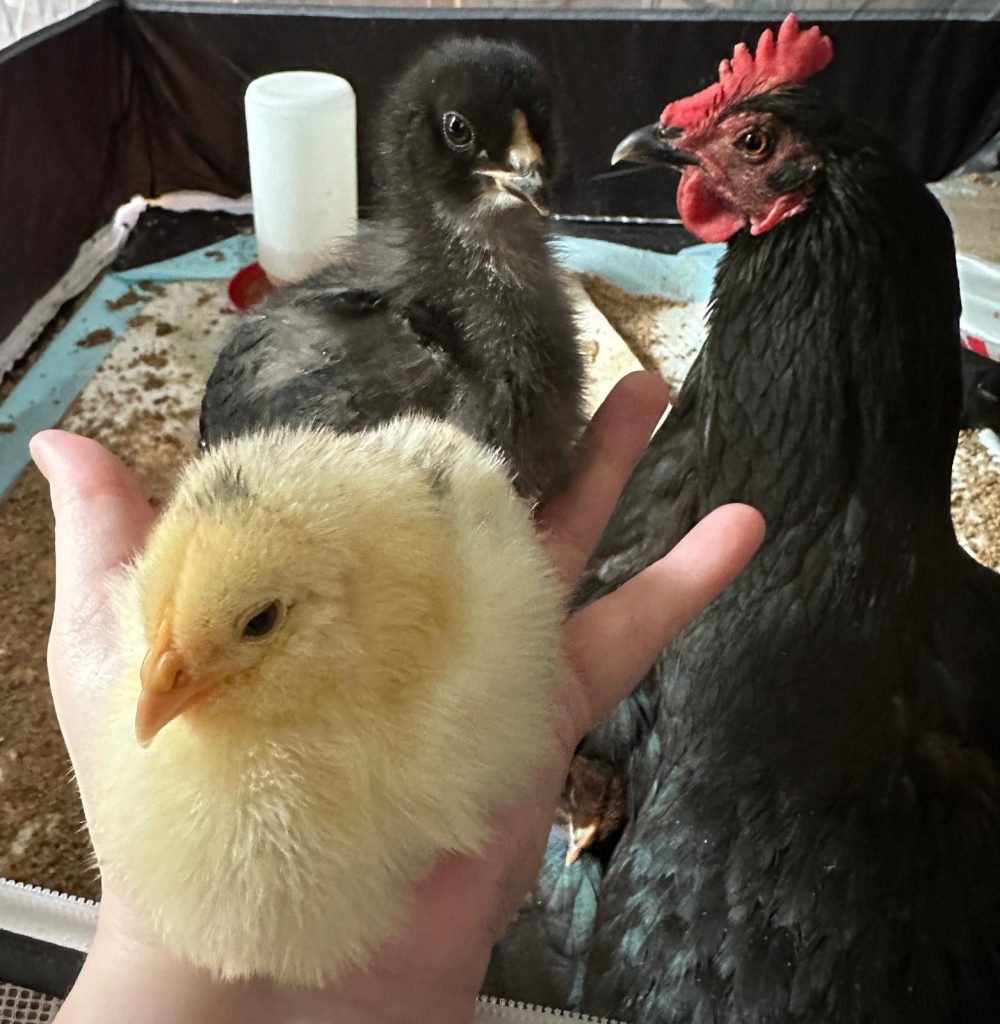
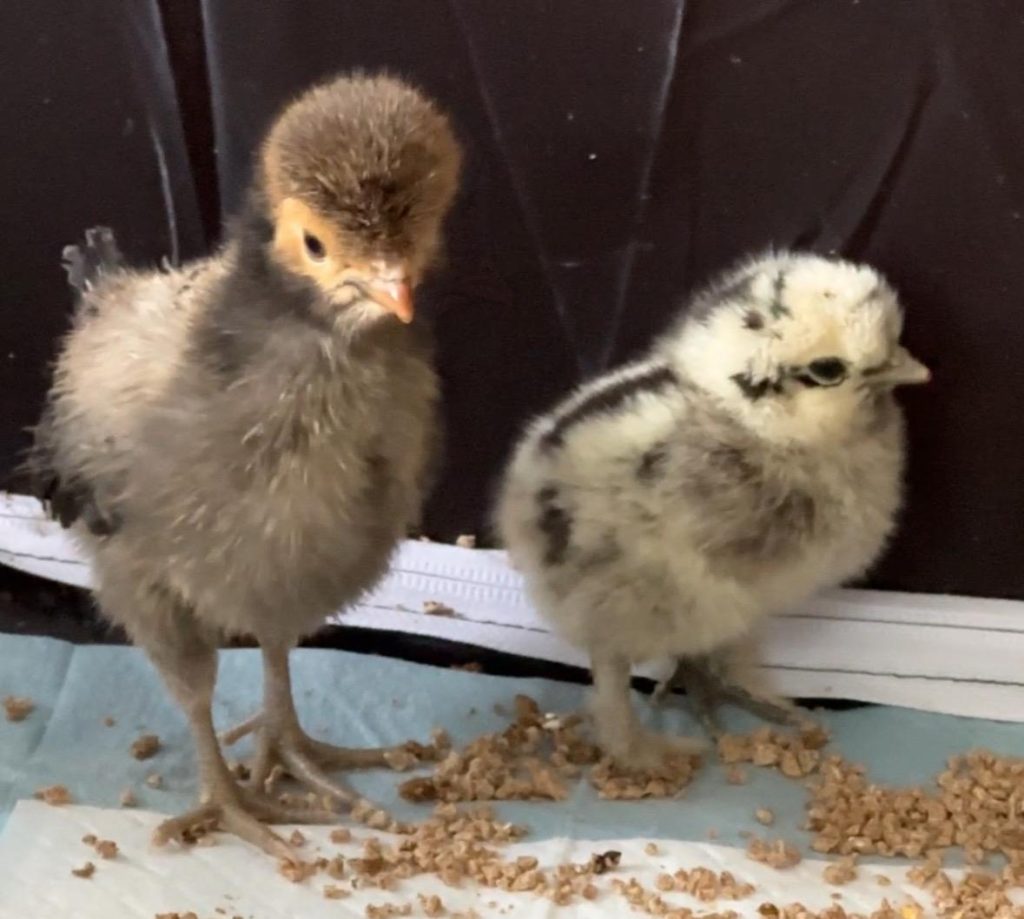
As they grew more independent (and sneaky), it got harder to catch them at bedtime. Around 10 weeks old, I began transitioning them to the coop. I was surprised Sora stuck with them so long. Most mamas stop mothering around 4 to 6 weeks – but she wasn’t ready to let go, and neither were they.
Finally, after a couple more weeks, they settled into their new life at the coop.
Today, those chicks are all grown. They still tend to hang around the house – after all, it was their first home. They sleep in the coop, but a few still sneak back inside now and then. Some even lay their eggs indoors, but that’s a story for another time. Stay tuned!

